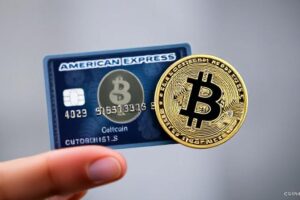
The World Gold Council (WGC) is preparing to reshape the future of bullion trading by introducing a pilot program for “digital gold” in 2026, a move that could redefine how gold is traded, settled, and used in financial markets.
Transforming London’s Bullion Market
London, home to a $900 billion precious metals market, has long been the global hub for gold trading. Now, WGC chief executive David Tait says the goal is to build a standardized digital layer for gold, enabling traders and institutions to pass the metal across the ecosystem in a way that allows it to function as collateral for the first time.
“We are trying to modernize gold so it can compete with other digital assets, while retaining its credibility as a safe-haven asset,” Tait told the Financial Times.
The new initiative aims to turn gold from a traditionally “static” holding into a more dynamic financial product, offering banks and asset managers new opportunities to generate yield while keeping the security of physical reserves intact.
Introducing “Pooled Gold Interest” (PGI)
The digital unit, known as Pooled Gold Interest (PGI), will allow banks and investors to hold fractional ownership of physical gold through separate accounts. This could give participants the ability to trade, post collateral, or use gold in margin activities more efficiently.
For banks, the new structure represents a chance to unlock value from reserves sitting on balance sheets, effectively turning gold into an income-generating asset.
Digital Gold vs. Crypto Gold
While the concept of tokenized gold isn’t new, many previous attempts from crypto projects have failed. Data from Blockdata shows that out of 66 gold-backed stablecoin initiatives, 24 have been discontinued, with two-thirds of them collapsing despite being backed by physical reserves.
Still, a few projects have thrived. Tether Gold (XAUT) and Pax Gold (PAXG) currently boast market caps above $1 billion, showing strong investor demand for tokenized safe-haven assets.
Interestingly, Bitcoin (BTC) has often been called “digital gold” due to its correlation with the metal during periods of macroeconomic uncertainty. Both assets tend to rally as investors look for safe alternatives to fiat currencies, although Bitcoin has historically shown higher volatility.
Why WGC’s Approach Stands Out
Unlike previous gold-backed tokens launched by crypto firms, WGC’s model is designed for institutional adoption. The plan emphasizes over-the-counter (OTC) trading in London, involving major banks and trading houses as co-owners of the underlying gold.
By anchoring the project in one of the most established bullion markets globally, WGC hopes to achieve the trust, liquidity, and scale that earlier digital gold ventures lacked.
The Road Ahead
The pilot program is scheduled for early 2026, with select commercial participants testing the system. If successful, WGC’s digital gold could bridge the gap between traditional bullion markets and the digital asset space, creating a new era for gold as both a safe haven and a yield-generating financial instrument.
As the world looks for stability amid shifting economic conditions, the fusion of physical gold with digital innovation may unlock new opportunities — positioning the yellow metal not just as a hedge, but as a dynamic player in the future of finance.







